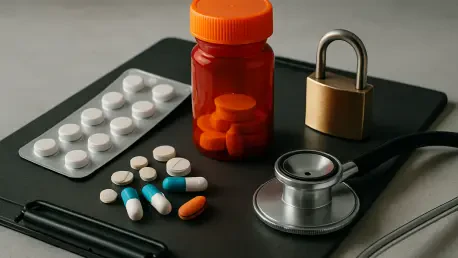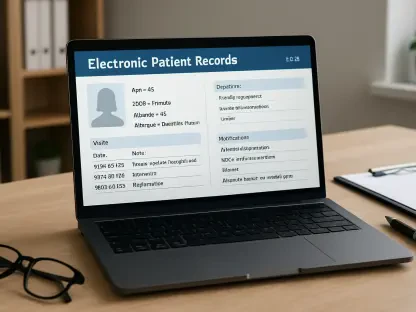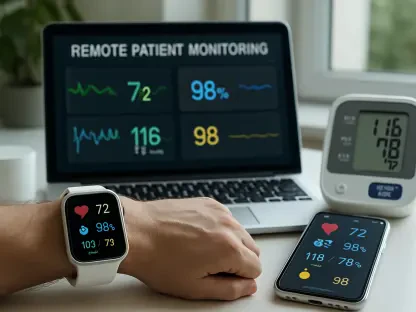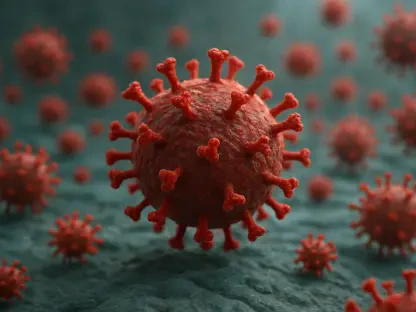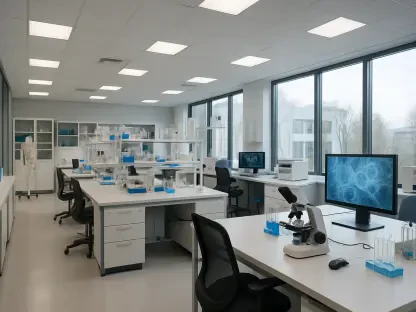In a healthcare landscape where medication errors can have devastating consequences, the University of Arkansas for Medical Sciences (UAMS) in Little Rock has emerged as a beacon of innovation with a transformative approach to safety. Unveiled at a prominent pharmacy meeting in Charlotte, N.C., this initiative centers on the concept of “good catch reports,” which document potential medication issues intercepted before they reach patients. Spearheaded by Dr. Carlette Seng, a dedicated medication safety officer, the program has not only skyrocketed the number of safety reports but also reshaped the culture among healthcare staff. Far from being just a statistical triumph, this effort reflects a deeper commitment to vigilance and trust within the system. By prioritizing proactive problem-solving over punitive measures, UAMS is setting a powerful example for health systems nationwide, demonstrating that a focus on prevention can yield profound improvements in patient care and safety outcomes.
Redefining Safety Culture Through Positive Recognition
A significant challenge in healthcare safety has long been the reluctance of staff to report errors due to fear of blame or repercussions. At UAMS, this barrier was tackled head-on by shifting the narrative from mistakes to prevention. Under Dr. Seng’s guidance, the introduction of good catch reports reframed safety documentation as a celebration of staff attentiveness. Instead of focusing solely on adverse events, the program highlighted moments where potential harm was averted, fostering a sense of accomplishment among pharmacy teams. This approach encouraged greater participation across various departments, as employees saw their contributions to patient well-being acknowledged and valued. The result was a noticeable cultural shift, where reporting became less about fault and more about collaborative improvement, setting the stage for a more open and supportive environment within the organization.
Beyond the initial concept, this cultural transformation had measurable impacts on overall safety reporting at UAMS. The emphasis on positive reinforcement built a foundation of trust, often referred to as a “just culture,” where staff felt secure in documenting not only near-misses but also actual errors. This newfound confidence is reflected in the dramatic rise of medication event reports over time, indicating a broader willingness to engage with safety protocols. Such a shift underscores how recognizing proactive efforts can dismantle long-standing fears around self-reporting. By prioritizing learning over punishment, the initiative strengthened accountability while ensuring that the focus remained on enhancing patient outcomes. This evolving mindset among staff has proven to be a cornerstone of the program’s success, illustrating the profound effect of positive framing in high-stakes environments like healthcare.
Innovative Tools Driving Engagement
One of the standout elements of the UAMS initiative was the creative use of simple, accessible tools to kickstart the reporting process. Initially, customized sticky notes with a distinctive logo were placed on whiteboards in high-traffic pharmacy areas. This low-cost, visual method allowed staff to quickly note good catches in real time, turning a routine task into an engaging, peer-visible activity. The approach was particularly effective in busy inpatient and outpatient settings, where immediate recognition of safety efforts boosted morale and participation. These tangible reminders served as constant prompts, embedding the habit of documentation into daily routines without adding burdensome steps. By making reporting both easy and public, UAMS ensured that the concept of good catches became a shared responsibility, sparking a collective commitment to safety across the board.
As the program gained traction, UAMS took steps to modernize and sustain the reporting mechanism by integrating a good catch option directly into the electronic health record (EHR) system. This digital transition eliminated the need for separate paperwork, aligning documentation with existing clinical workflows. Pharmacists could now log interventions seamlessly during their regular tasks, reducing friction and enhancing compliance. The move to EHR integration not only made the process more efficient but also ensured scalability, allowing the initiative to grow without losing its core accessibility. This adaptation reflected a keen understanding of modern healthcare demands, where technology plays a critical role in streamlining operations. By evolving from sticky notes to digital tools, UAMS demonstrated a practical balance between innovation and usability, ensuring that safety reporting remained a priority even as the program expanded.
Tangible Results and System-Wide Enhancements
The impact of good catch reports at UAMS extends far beyond increased documentation, translating into concrete improvements in medication safety systems. Over an eight-month period, the initiative uncovered 240 unique opportunities for enhancement, leading to 120 actionable changes. These updates, guided by recommendations from the Institute for Safe Medication Practices (ISMP), addressed critical vulnerabilities, such as revising order sets to prevent dangerous drug interactions. A notable example includes adjustments to protocols around Lovenox during epidurals, a combination flagged for serious risks. By using data from good catch reports to inform high-priority interventions, UAMS ensured that potential hazards were mitigated before they could cause harm. This proactive use of information highlights how focused reporting can drive systemic change, reinforcing the infrastructure of patient safety in meaningful ways.
Equally impressive is the broader ripple effect of the program on overall safety reporting metrics at UAMS. A nearly 500% surge in good catch reports over 21 months was accompanied by a significant uptick in general medication event documentation, signaling a deeper cultural acceptance of transparency. This unexpected outcome illustrates how a focus on positive contributions can enhance trust across all levels of safety reporting. Staff became more willing to disclose errors alongside near-misses, knowing the emphasis was on improvement rather than blame. Such openness has fortified the health system’s ability to identify and address risks comprehensively. Endorsement from ISMP further validates the initiative’s alignment with industry best practices, positioning UAMS as a model for other organizations aiming to elevate safety standards through innovative, staff-centered strategies.
Paving the Way for Future Safety Innovations
Reflecting on the journey of this initiative, it’s evident that UAMS set a powerful precedent by prioritizing intercepted errors and actionable data over mere compliance. The program’s success in boosting good catch reports and overall event documentation reshaped how staff engaged with safety protocols in the past. By integrating user-friendly tools and fostering a culture of trust, the health system addressed immediate risks while laying a robust foundation for ongoing improvement. Each step, from sticky notes to EHR updates, was a calculated move to ensure sustainability and impact. The collaboration between leadership and frontline staff proved instrumental in driving these changes, highlighting the value of shared goals in healthcare safety.
Looking ahead, the legacy of this effort offers clear pathways for other institutions to emulate. Health systems can adopt similar positive reinforcement strategies, starting with accessible reporting tools tailored to their unique workflows. Leveraging data from good catches to inform system-wide fixes should be a priority, as should nurturing a just culture that encourages transparency. Partnerships with industry experts, like ISMP, can provide additional guidance to refine these efforts. As healthcare continues to evolve, initiatives like the one pioneered at UAMS remind stakeholders that safety is a collective responsibility, achievable through innovation, trust, and a relentless focus on prevention. This model serves as an inspiring blueprint for tackling medication safety challenges in the years to come.
